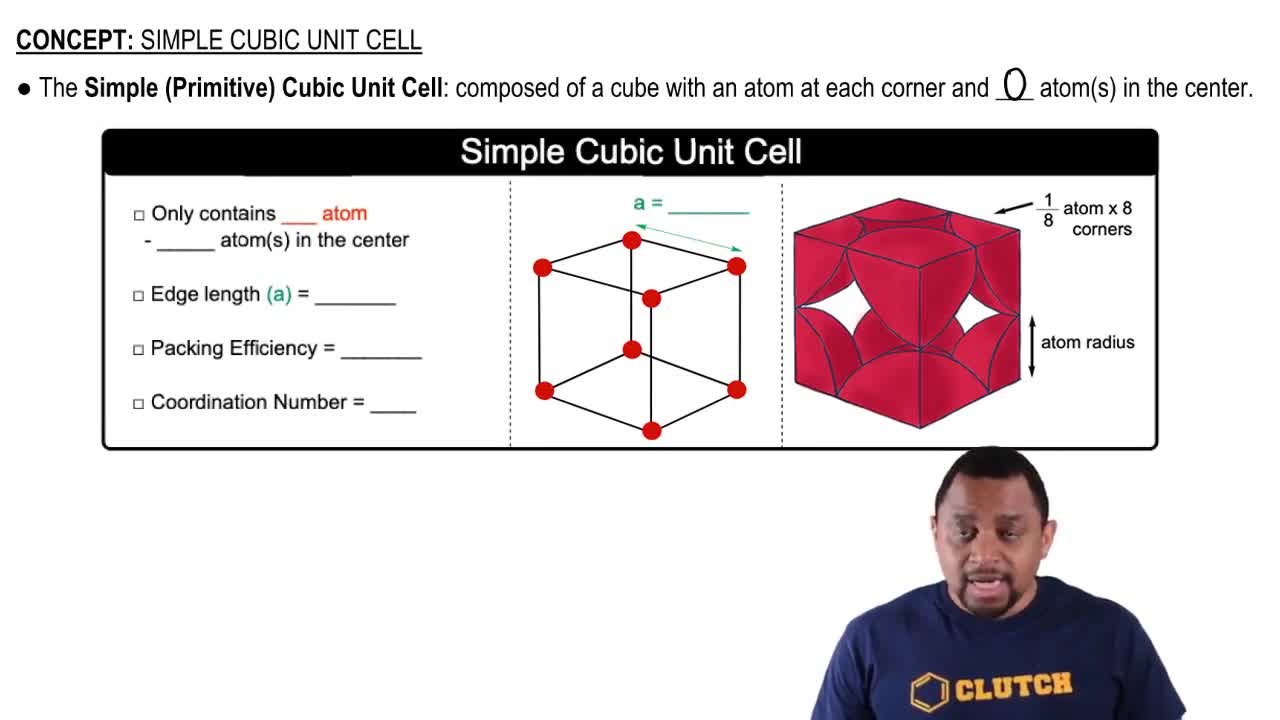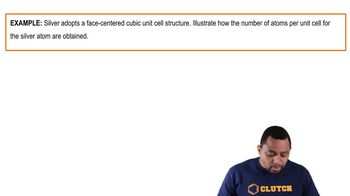Textbook Question
Imagine the primitive cubic lattice. Now imagine pushing on top of it, straight down. Next, stretch another face by pulling it to the right. All angles remain 90°. What kind of primitive lattice have you made?

 Verified step by step guidance
Verified step by step guidance



Imagine the primitive cubic lattice. Now imagine pushing on top of it, straight down. Next, stretch another face by pulling it to the right. All angles remain 90°. What kind of primitive lattice have you made?
Pure iron crystallizes in a body-centered cubic structure, shown in the figure. but small amounts of impurities can stabilize a facecentered cubic structure. Which form of iron has a higher density?
What type of lattice—primitive cubic, body-centered cubic, or face-centered cubic—does each of the following structure types possess: (e) ZnS?